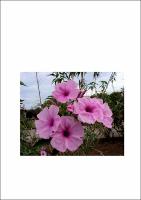| Compartilhamento |


|
Use este identificador para citar ou linkar para este item:
http://tede2.uefs.br:8080/handle/tede/1082Registro completo de metadados
| Campo DC | Valor | Idioma |
|---|---|---|
| dc.creator | Paz, Joicelene Regina Lima da | - |
| dc.creator.Lattes | http://lattes.cnpq.br/296558697658994 | por |
| dc.contributor.advisor1 | Gimenes , Miriam | - |
| dc.date.accessioned | 2020-05-05T23:16:02Z | - |
| dc.date.issued | 2011-03-02 | - |
| dc.identifier.citation | PAZ, Joicelene Regina Lima da. Biologia floral e polinização diurna e noturna de Ipomoea carnea subsp. fistulosa (Mart. ex Choisy) D.F. Austin (Convolvulaceae) em uma área antropizada no semi-árido da Bahia, Brasil. 2011. 52 f. Dissertação (Mestrado Acadêmico em Botânica)- Universidade Estadual de Feira de Santana, Feira de Santana, 2011. | por |
| dc.identifier.uri | http://tede2.uefs.br:8080/handle/tede/1082 | - |
| dc.description.resumo | Flores de Ipomoea são caracterizadas principalmente por serem efêmeras e vistosas, atraindo muitos visitantes florais pertencentes a grupos taxonômicos diferentes, estando geralmente sincronizados com os horários de abertura e fechamento das flores. Neste trabalho tivemos como proposta relacionar os aspectos da floração, morfologia e biologia floral de Ipomoea carnea subsp. fistulosa com a dinâmica dos visitantes florais e os fatores meteorológicos e ambientais, com ênfase nos aspectos temporais e comportamentais, em diferentes meses do ano, em uma área antropizada do semi-árido da Bahia. Foram realizadas observações mensais, durante três dias inteiros (72 h), entre outubro/09 e agosto/10, no Campus da UEFS (BA) para investigação da morfologia e biologia floral, sistema reprodutivo, aspectos da floração e coleta de visitantes florais. O florescimento desta planta ocorreu durante todos os meses, sendo que os indivíduos apresentaram flores que abriam em três turnos, de manhã, à tarde e à noite, com longevidade de 11, 19 e 16 horas, respectivamente. Esta espécie é auto-incompatível e as flores foram visitadas predominantemente por abelhas e mariposas e apresentaram características morfológicas comuns às síndromes de melitofilia e falenofilia. A coloração vistosa rosa-magenta das flores atrairia as abelhas e o forte odor adocicado durante à noite, atrairia as mariposas. As abelhas Apis mellifera, Melitoma aff. segmentaria e Pseudoaughlcora pandora foram consideradas os polinizadores potenciais diurnos e a mariposa esfingídeo Agrius cingulata o potencial polinizador noturno. A exposição das flores por 24 horas, atraindo visitantes diurnos e noturnos, aumentaria as chances de polinização, especialmente em plantas ruderais e invasoras como I. carnea subsp. fistulosa. | por |
| dc.description.abstract | Flowers of Ipomoea are characterized mainly by be ephemeral and showy, attracting a lot floral visitors belong to different taxonomic groups and are generally synchronized with the times of opening and closing of flowers. In this study we proposing to relate aspects of flowering, morphology and floral biology of Ipomoea carnea subsp. fistulosa with the dynamics of the pollinators and the meteorological and environmental factors, with emphasis on temporal and behavioral aspects in different months of the year, in an anthropic area of the Bahia semiarid. Monthly observations were made for three days (72 h), between October/09 and August/10 on the Campus of UEFS (BA), to investigate the morphology and floral biology, reproductive system, aspects of flowering and collects of floral visitors. The flowering of this plant occurred during all months, when the individuals produced flowers that opened during the three periods of the day, morning, afternoon and evening, with a longevity of 11, 19 and 16 hours respectively. This species is self-incompatible and the flowers were visited predominantly by bees and moths presenting morphological traits common to the syndromes melittophily and phalaenophily. The conspicuous pink color of the flowers attracts the bees and the strong sweet scent during the evening attracts the moths. The bees Apis mellifera, Melitoma aff. segmentaria, Pseudoaughlcora Pandora were considered the potential diurnal pollinators and the hawkmoths Agrius cingulata the potential night pollinator. The exhibition of the flowers for 24 hours, attracting visitors day and night, increases the chances of pollination, especially in ruderal and weedy species as I. carnea subsp. fistulosa. | eng |
| dc.description.provenance | Submitted by Ricardo Cedraz Duque Moliterno (ricardo.moliterno@uefs.br) on 2020-05-05T23:16:02Z No. of bitstreams: 1 Joicelene Paz_ Dissertacao_PPGBot 2011.pdf: 2300564 bytes, checksum: 4e6790d7a9db73b6da0e000e53d7c7a8 (MD5) | eng |
| dc.description.provenance | Made available in DSpace on 2020-05-05T23:16:02Z (GMT). No. of bitstreams: 1 Joicelene Paz_ Dissertacao_PPGBot 2011.pdf: 2300564 bytes, checksum: 4e6790d7a9db73b6da0e000e53d7c7a8 (MD5) Previous issue date: 2011-03-02 | eng |
| dc.description.sponsorship | Fundação de Amparo à Pesquisa do Estado da Bahia - FAPEB | por |
| dc.format | application/pdf | * |
| dc.thumbnail.url | http://tede2.uefs.br:8080/retrieve/6573/Joicelene%20Paz_%20Dissertacao_PPGBot%202011.pdf.jpg | * |
| dc.language | por | por |
| dc.publisher | Universidade Estadual de Feira de Santana | por |
| dc.publisher.department | DEPARTAMENTO DE CIÊNCIAS BIOLÓGICAS | por |
| dc.publisher.country | Brasil | por |
| dc.publisher.initials | UEFS | por |
| dc.publisher.program | Mestrado Acadêmico em Botânica | por |
| dc.rights | Acesso Aberto | por |
| dc.subject | Apoidea | por |
| dc.subject | Atividade diária | por |
| dc.subject | Falenofilia | por |
| dc.subject | Melitofilia | por |
| dc.subject | Sphingidae | por |
| dc.subject | Daily activity | eng |
| dc.subject | Melittophily | eng |
| dc.subject | Phalaenophily | eng |
| dc.subject | Sphingidae | eng |
| dc.subject.cnpq | CIENCIAS BIOLOGICAS::BOTANICA | por |
| dc.title | Biologia floral e polinização diurna e noturna de Ipomoea carnea subsp. fistulosa (Mart. ex Choisy) D.F. Austin (Convolvulaceae) em uma área antropizada no semi-árido da Bahia, Brasil | por |
| dc.type | Dissertação | por |
| Aparece nas coleções: | Coleção UEFS | |
Arquivos associados a este item:
| Arquivo | Descrição | Tamanho | Formato | |
|---|---|---|---|---|
| Joicelene Paz_ Dissertacao_PPGBot 2011.pdf | Arquivo em texto completo. | 2,25 MB | Adobe PDF |  Baixar/Abrir Pré-Visualizar |
Os itens no repositório estão protegidos por copyright, com todos os direitos reservados, salvo quando é indicado o contrário.




